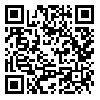Volume 12, Issue 6 (Feb & Mar 2019)
payavard 2019, 12(6): 467-475 |
Back to browse issues page
Download citation:
BibTeX | RIS | EndNote | Medlars | ProCite | Reference Manager | RefWorks
Send citation to:



BibTeX | RIS | EndNote | Medlars | ProCite | Reference Manager | RefWorks
Send citation to:
Dargahi H, Nomani F, Irandoost K. Study of Burnout Syndrome among Faculty Members and Lecturers in one of the Schools of Tehran University of Medical Sciences. payavard 2019; 12 (6) :467-475
URL: http://payavard.tums.ac.ir/article-1-6673-en.html
URL: http://payavard.tums.ac.ir/article-1-6673-en.html
1- Professor, Helalth Management and Economics Department, School of Public Health, Health Information Management Research Center, Tehran University of Medical Sciences, Tehran, Iran , hdargahi@sina.tums.ac.ir
2- Master of Science in Health Economics, Health Management and Economics Department, School of Public Health, Tehran University of Medical Sciences, Tehran, Iran
2- Master of Science in Health Economics, Health Management and Economics Department, School of Public Health, Tehran University of Medical Sciences, Tehran, Iran
Abstract: (4104 Views)
Background and Aim: In educational systems, the burnout of faculty members and lecturers is a big problem that affects their interaction with students. Therefore, this research aims to determine the rate of burnout syndrome among the lecturers and faculty members in a school in Tehran University of Medical Sciences (TUMS).
Materials and Methods: This study was a descriptive-analytical and cross-sectional research performed by Maslach′s burnout questionnaire among 40 academic members and lecturers selected by census method. The data were analyzed by SPSS software version 20.
Results: The mean age of respondents was 48±18 years. Some (42.5%) of the subjects had 21-30 years of educational work experience. The emotional burnout of the participants was at a high level in this study. However, in the dimension of depersonalization disorder, it was moderate. Meanwhile, their job performance was below moderate. Also, there was a significant correlation between emotional burnout and gender (P=0.043) and between depersonalization disorder and executive work experience (P=0.043).
Conclusion: Due to the remarkable high frequency of job burnout among faculty members and lecturers, holding in-person meetings, the analysis and pathology of causes of burnout, and application of supportive mechanisms are recommended to improve their job performance.
Materials and Methods: This study was a descriptive-analytical and cross-sectional research performed by Maslach′s burnout questionnaire among 40 academic members and lecturers selected by census method. The data were analyzed by SPSS software version 20.
Results: The mean age of respondents was 48±18 years. Some (42.5%) of the subjects had 21-30 years of educational work experience. The emotional burnout of the participants was at a high level in this study. However, in the dimension of depersonalization disorder, it was moderate. Meanwhile, their job performance was below moderate. Also, there was a significant correlation between emotional burnout and gender (P=0.043) and between depersonalization disorder and executive work experience (P=0.043).
Conclusion: Due to the remarkable high frequency of job burnout among faculty members and lecturers, holding in-person meetings, the analysis and pathology of causes of burnout, and application of supportive mechanisms are recommended to improve their job performance.
Send email to the article author
| Rights and permissions | |
 |
This work is licensed under a Creative Commons Attribution-NonCommercial 4.0 International License. |





